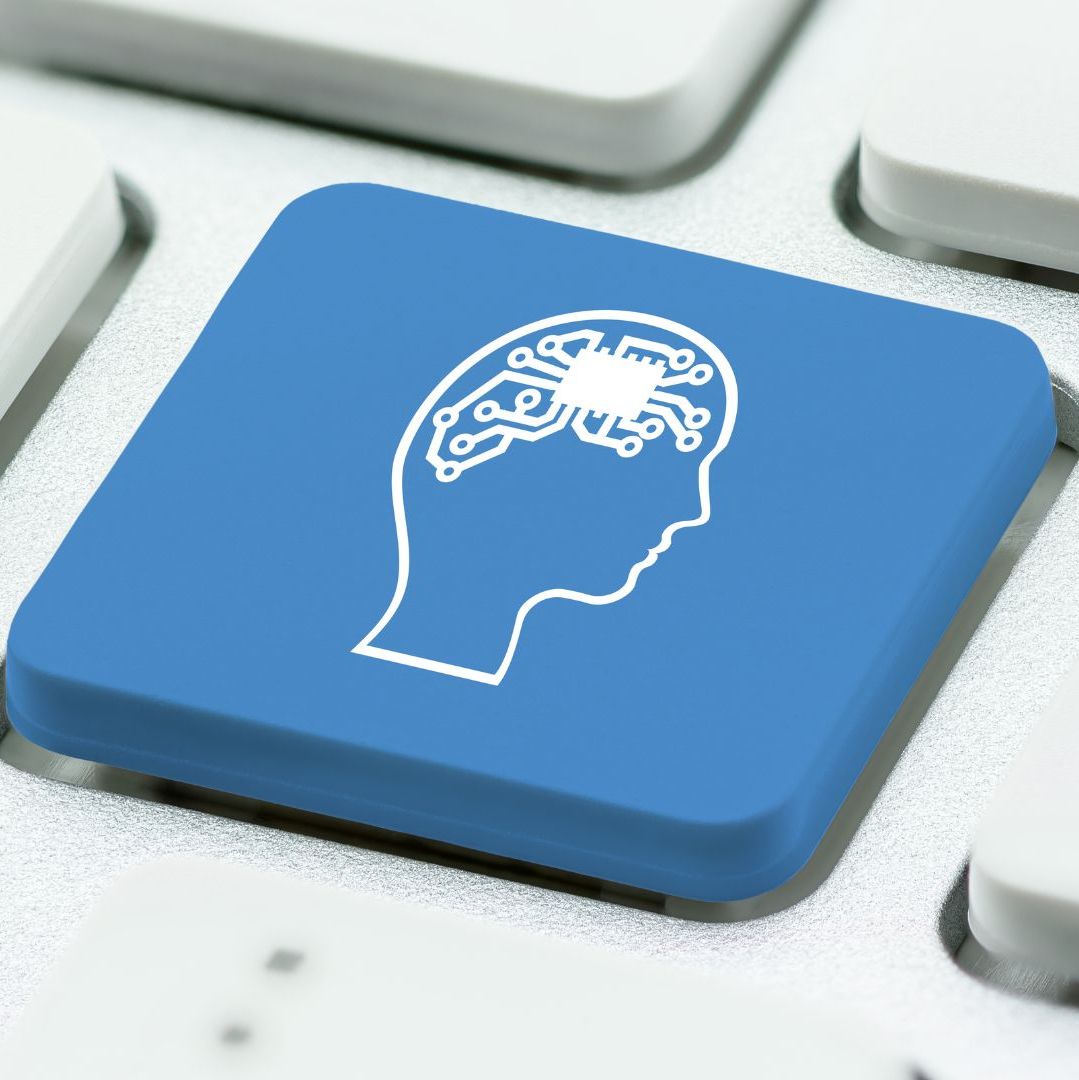Progress in Speech-to-text Technologies for African Languages
What Progress Has Been Made in Speech-to-text Technologies for African Languages?
The world of technology is constantly evolving, and one of the areas experiencing significant growth is speech-to-text technologies. These technologies, crucial for various applications such as voice-activated assistants, automated transcription services, and accessibility tools for the hearing impaired, have made remarkable strides in recent years. However, when it comes to African languages, the progress has been both challenging and inspiring, presenting unique opportunities for data scientists, technology entrepreneurs, and software developers.
As we delve into the advancements in speech-to-text technologies for African languages, several key questions arise: What are the unique challenges faced in developing these technologies for African languages? How have recent advancements addressed these challenges, and what impact have they had on the communities they serve? Moreover, what areas still require significant improvement to ensure these technologies serve their intended users effectively?
This article aims to explore these questions, showcasing the advancements, the hurdles overcome, and the journey ahead for speech-to-text technologies in the context of African languages. Our audience—comprising data scientists, technology entrepreneurs, software developers, and industries leveraging AI to enhance their machine learning capabilities—will find valuable insights into the current state and future prospects of these technologies.
African Languages Speech To Text Challenges and Indicators
The Linguistic Diversity of African Languages
Africa’s linguistic landscape is incredibly diverse, with over 2000 languages spoken across the continent. This diversity presents a significant challenge for developing speech-to-text technologies, as each language has its unique phonetics, syntax, and semantics.
Africa’s linguistic diversity is unparalleled, with the continent home to over 2000 distinct languages, ranging from widely spoken languages like Swahili and Hausa to lesser-known languages such as Tigrinya and Shona. This rich tapestry of languages is not just a testament to the continent’s cultural diversity but also poses a unique set of challenges for the development of speech-to-text technologies.
Each language comes with its own set of phonetics, syntax, and semantics, which can significantly vary even within the same language family. This variety requires speech-to-text systems to be highly adaptable and sensitive to the linguistic nuances of each language, necessitating a bespoke approach rather than a one-size-fits-all solution.
Developing speech-to-text technologies for such a wide array of languages is not merely a technical challenge; it is also a resource-intensive endeavour. Creating accurate models requires extensive datasets of spoken language, which must cover a broad spectrum of dialects, accents, and contexts to be truly effective.
Furthermore, the linguistic features of many African languages, such as tonality and click sounds in some languages, present additional complexities that are not commonly encountered in languages from other parts of the world. These features demand innovative approaches in speech recognition technology, including the development of new algorithms capable of capturing and processing the rich phonetic and prosodic characteristics of African languages.
Data Scarcity and Collection Efforts
One of the primary challenges in developing speech-to-text systems for African languages is the scarcity of digital data. Recent efforts by various organisations and companies have focused on data collection and creation of datasets specific to African languages.
The development of speech-to-text technologies for African languages is significantly hampered by the scarcity of digital data. Many African languages are underrepresented in digital formats, making it challenging to gather the vast amounts of spoken language data needed to train effective speech recognition models.

In response to this challenge, recent efforts by various organisations and companies have been geared towards the collection and creation of language-specific datasets. These initiatives involve recording spoken language samples across a wide range of demographics, dialects, and settings to create a comprehensive database that can be used to train and refine speech-to-text systems.
Moreover, the task of data collection is further complicated by the need to ensure that the data is representative of the diverse ways in which languages are used in different regions and communities. This includes not only variations in dialect and accent but also in the context of language use, such as formal versus informal speech, technical versus everyday vocabulary, and variations across age groups and social classes.
To address these challenges, data collection efforts often involve collaborations with local communities, linguists, and language experts, ensuring that the datasets are not only extensive but also culturally and linguistically inclusive. These efforts are crucial for building speech-to-text systems that are accurate, reliable, and truly reflective of the linguistic diversity of the African continent.
Technological Advances and Machine Learning
Advances in machine learning algorithms and neural networks have played a pivotal role in improving the accuracy of speech-to-text technologies. These technologies have become more adept at handling the nuances of African languages.
The rapid advancements in machine learning algorithms and neural networks have been a game-changer for speech-to-text technologies, particularly for African languages. These technological strides have enabled the development of models that are more adept at handling the linguistic nuances and complexities of these languages.
Modern machine learning techniques, such as deep learning, have the capacity to analyse and learn from vast amounts of data, allowing them to capture the subtle differences in pronunciation, tone, and syntax that characterise African languages. This has led to significant improvements in the accuracy and efficiency of speech-to-text systems, making them more effective for a wide range of applications.
Furthermore, the application of transfer learning and other innovative approaches in machine learning has facilitated the rapid development of speech-to-text technologies for languages with limited datasets. By leveraging the data and models developed for one language, researchers can more quickly and efficiently create models for other languages, even those with relatively little spoken data available.
This approach not only accelerates the development process but also helps in overcoming the challenges posed by data scarcity. As machine learning technologies continue to evolve, they hold the promise of further enhancing the capabilities of speech-to-text systems, making them more accessible and useful for speakers of African languages.
Collaboration Between Academia and Industry
Successful advancements in speech-to-text for African languages have often resulted from collaborations between academic institutions, local communities, and tech companies. These partnerships help bridge the gap between linguistic research and practical application.
The intersection of academic research and industry innovation has been instrumental in driving advancements in speech-to-text technologies for African languages. Academic institutions bring to the table a deep understanding of the linguistic and phonetic complexities of these languages, while industry partners offer the technological resources and practical applications to bring research findings to life. These collaborations have led to the development of more sophisticated and accurate speech-to-text models, tailored to the specific needs and characteristics of African languages.
Such partnerships often involve multidisciplinary teams of linguists, computer scientists, and local language experts working together to tackle the unique challenges presented by each language. By combining theoretical linguistic research with cutting-edge machine learning techniques, these teams are able to create innovative solutions that bridge the gap between academic knowledge and practical application. Furthermore, these collaborations provide valuable opportunities for knowledge exchange and capacity building, empowering local communities and fostering a greater understanding of the technological potential of African languages.
Government and Policy Support
Government policies and support can significantly impact the development and adoption of speech-to-text technologies. Initiatives to promote local languages and invest in technology infrastructure are crucial.
The role of government policies and support cannot be overstated in the development and adoption of speech-to-text technologies for African languages. Government initiatives that promote the use of local languages in education, media, and public services can significantly increase the demand for and development of these technologies.

By recognising the importance of linguistic diversity and investing in technology infrastructure, governments can create an enabling environment for the growth of speech-to-text solutions that cater to a wider audience. Additionally, policies that encourage research and development in the field of language technologies can stimulate innovation and attract investment, both from within the continent and internationally.
Support in the form of grants, subsidies, and partnerships with academic and private sectors can accelerate the development of speech-to-text systems that are not only technologically advanced but also culturally and linguistically inclusive. This government backing is crucial for overcoming the challenges of data scarcity, technological resources, and expertise, paving the way for speech-to-text technologies that enhance communication, education, and accessibility for speakers of African languages.
Challenges in Dialects and Accents
The variation in dialects and accents within a single African language poses additional challenges for speech-to-text systems, requiring more sophisticated models to accurately understand and transcribe speech.
The diversity of dialects and accents within a single African language presents a significant challenge for speech-to-text systems. The variation in pronunciation, vocabulary, and syntax across different regions and communities can lead to discrepancies in speech recognition accuracy. For instance, a speech-to-text system trained primarily on data from one dialect may struggle to accurately transcribe speech from another dialect of the same language. This necessitates the development of models that are not only linguistically robust but also adaptable to the wide range of dialectical variations present within African languages.
Addressing these challenges requires a comprehensive approach that includes the collection of diverse dialectal data, the development of dialect-aware machine learning models, and the implementation of adaptive algorithms that can learn from user interactions. By incorporating feedback mechanisms that allow the system to adjust and improve over time, speech-to-text technologies can become more adept at handling dialectal and accent variations. This adaptability is crucial for ensuring that speech-to-text systems are accessible and effective for all speakers, regardless of their regional dialect or accent.
User-Centric Design and Accessibility
Designing speech-to-text technologies that are user-friendly and accessible to all, including those in rural or under-resourced areas, is essential for their success and adoption.
The success and adoption of speech-to-text technologies in Africa hinge on their user-centric design and accessibility. Designing technologies that are intuitive and easy to use for speakers of African languages, including those in rural or under-resourced areas, is essential. This involves not only the linguistic adaptation of the systems but also considerations of the technological infrastructure and digital literacy of the target users. User-centric design means creating interfaces and functionalities that are tailored to the specific needs and preferences of the users, ensuring that the technology is not only functional but also engaging and relevant to their daily lives.
Moreover, accessibility extends beyond the user interface to include the broader ecosystem in which these technologies are deployed. This encompasses the availability of devices capable of running speech-to-text applications, the affordability of these technologies, and the availability of internet connectivity in remote areas. By addressing these factors, developers can ensure that speech-to-text technologies reach a wider audience, breaking down barriers to communication and information access. In doing so, these technologies can contribute to bridging the digital divide, empowering individuals and communities through enhanced access to education, healthcare, and economic opportunities.
Impact on Education and Accessibility
Speech-to-text technologies hold the potential to transform education and accessibility, offering new learning opportunities and support for individuals with disabilities.
Speech-to-text technologies have the potential to revolutionise education and accessibility in Africa, offering new avenues for learning and communication. For students who speak local languages, these technologies can provide access to educational content and resources in their native languages, fostering a more inclusive and effective learning environment. By converting spoken language into text, speech-to-text systems can also support literacy development, enabling learners to see the written form of their spoken words. This is particularly valuable in multilingual education settings, where students may be learning in a second or third language.
Furthermore, speech-to-text technologies can greatly enhance accessibility for individuals with disabilities, such as those with visual impairments or motor difficulties that make traditional reading and writing challenging. By enabling voice commands and converting speech into text, these technologies can facilitate communication, access to information, and participation in digital spaces. This has the potential to significantly improve the quality of life for individuals with disabilities, providing them with greater independence and opportunities for education, employment, and social engagement.
The Role of AI Ethics and Bias Mitigation
Addressing ethical considerations and mitigating biases in speech recognition models is vital to ensure these technologies are fair and inclusive.
As speech-to-text technologies advance, it is crucial to address ethical considerations and mitigate biases in speech recognition models. The risk of bias is particularly high in systems developed with limited datasets, which may not accurately represent the diversity of speakers and linguistic variations. Biased models can lead to inaccuracies in speech recognition, perpetuating inequalities and excluding certain groups from benefiting from these technologies.

To address these issues, developers must prioritise the creation of inclusive datasets and implement fairness measures in their algorithms. Ethical considerations also extend to privacy and data protection, especially given the sensitive nature of voice data. Ensuring that speech-to-text technologies are developed and used in a manner that respects user privacy and secures personal data is essential for building trust and encouraging adoption.
This includes transparent policies on data use, consent mechanisms, and robust security measures to protect against unauthorised access. By prioritising ethics and bias mitigation, developers can create speech-to-text systems that are not only technologically advanced but also socially responsible and inclusive.
Future Directions and Innovations
Exploring future directions for speech-to-text technologies in African languages, including the integration of these technologies into various sectors such as healthcare, finance, and customer service.
Looking ahead, the future of speech-to-text technologies for African languages is ripe with possibilities. Innovations may include the integration of these technologies into various sectors such as healthcare, finance, and customer service, where they can facilitate communication and provide access to services in local languages. The development of speech-to-text systems that can interpret and translate between multiple African languages could further enhance cross-cultural communication and integration.
Moreover, the continued advancement of machine learning and artificial intelligence promises to address some of the current limitations of speech-to-text technologies, such as handling complex linguistic features and dialectal variations. As these technologies evolve, there is also a growing opportunity to explore their application in preserving endangered languages and promoting linguistic diversity. By documenting and supporting the use of lesser-spoken languages, speech-to-text technologies can contribute to cultural preservation and the revitalisation of linguistic heritage.
The journey towards fully realising the potential of speech-to-text technologies for African languages is complex and multifaceted. It requires sustained collaboration among stakeholders, ongoing innovation, and a commitment to inclusivity and accessibility. With the right support and investment, these technologies have the power to transform communication, education, and accessibility across the continent, opening up a world of opportunities for speakers of African languages.
Key Tips on Speech-To-Text Technologies
- Understand the unique linguistic features of African languages is crucial for developing effective speech-to-text technologies.
- Invest in data collection and the creation of robust datasets for African languages cannot be overstated.
- Collaborate across sectors is key to overcoming the challenges and leveraging the opportunities in this field.
- Prioritise user-centric design and accessibility will ensure wider adoption and impact of these technologies.
Way With Words provides highly customised and appropriate speech data collections for African languages speech, and other use cases, for technologies that use or are targeted at African languages where AI language and speech are a key development.
The journey of developing speech-to-text technologies for African languages is one filled with challenges, innovations, and significant potential. As we have explored, from addressing data scarcity to handling linguistic diversity, and from leveraging machine learning advancements to ensuring ethical and inclusive practices, the road ahead is both complex and promising. The key to future success lies in continued collaboration, investment in technology and infrastructure, and a steadfast commitment to the communities these technologies aim to serve.
For technology enthusiasts, developers, linguists, and industries looking to advance their machine learning capabilities, the progress made so far is just the beginning. By focusing on the areas needing improvement and harnessing the power of AI and machine learning, the possibilities for speech-to-text technologies in African languages are boundless.
As we look to the future, it is crucial to remember that the ultimate goal of these technologies is to break down barriers, enhance communication, and create more inclusive digital spaces. With concerted effort and innovation, speech-to-text technologies for African languages will not only advance but thrive, enriching the lives of millions across the continent and beyond.
African Languages Speech-To-Text Resources
African Language Speech Collection Solution: Way With Words – We create custom speech datasets for African languages including transcripts for machine learning purposes. Our service is used for technologies looking to create or improve existing automatic speech recognition models (ASR) using natural language processing (NLP) for select African languages and various domains.
Machine Transcription Polishing of Captured Speech Data: Way With Words – We polish machine transcripts for clients across a number of different technologies. Our machine transcription polishing (MTP) service is used for a variety of AI and machine learning purposes that are intended to be applied in various African languages. User applications include machine learning models that use speech-to-text for artificial intelligence research, FinTech/InsurTech, SaaS/Cloud Services, Call Centre Software and Voice Analytic services for the customer journey.
MakerereNLP: Text & Speech for East Africa: The project aims to deliver open, accessible and high quality text and speech datasets for low resourced East African languages from Uganda, Tanzania and Kenya. Taking advantage of the advances in NLP and voice technology requires a large corpora of high quality text and speech datasets. This project will aim to provide this data for the languages: Luganda, Runyankore-Rukiga, Acholi, Swahili and a subset of Luhya Languages which are cross-border between Uganda and Kenya.
